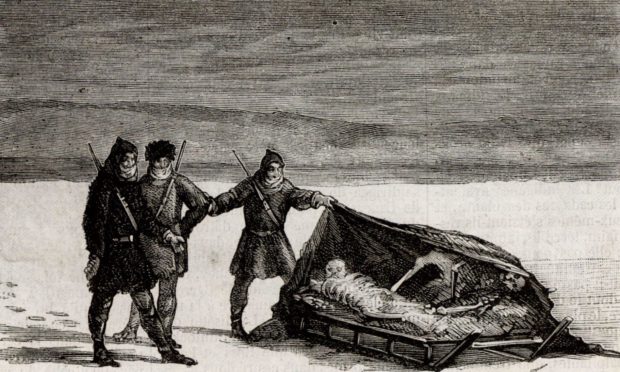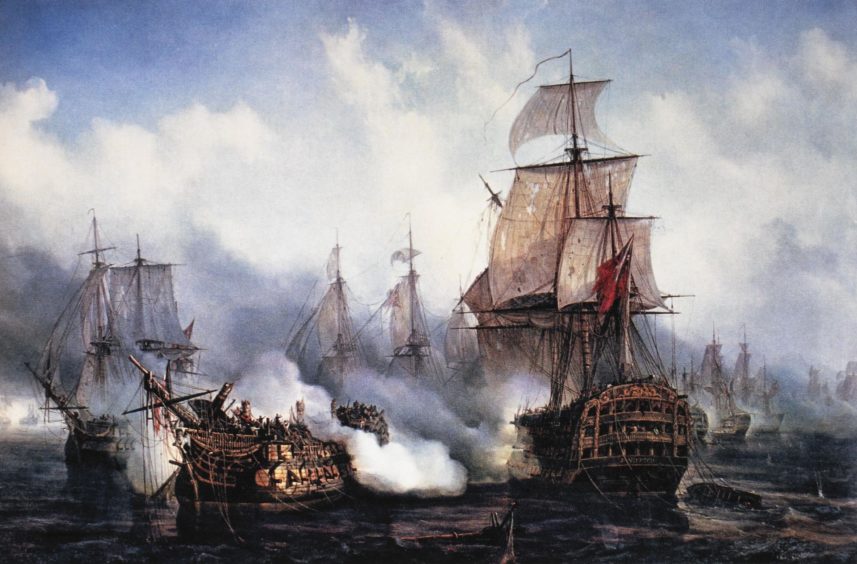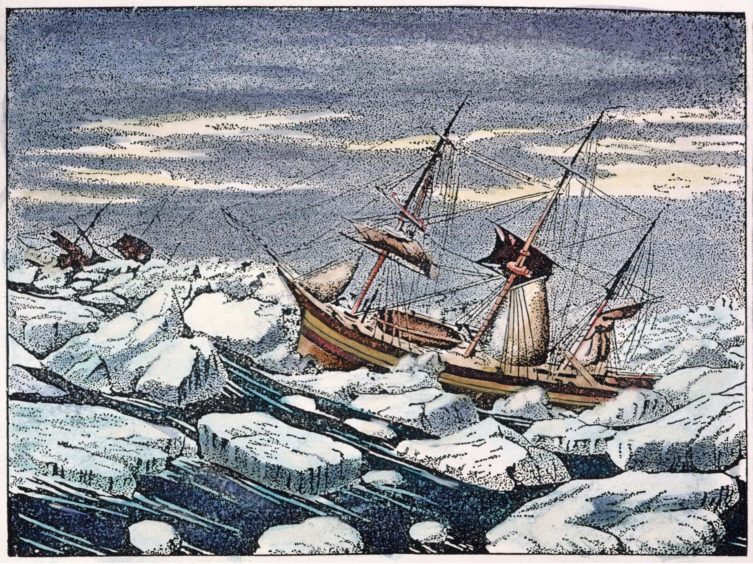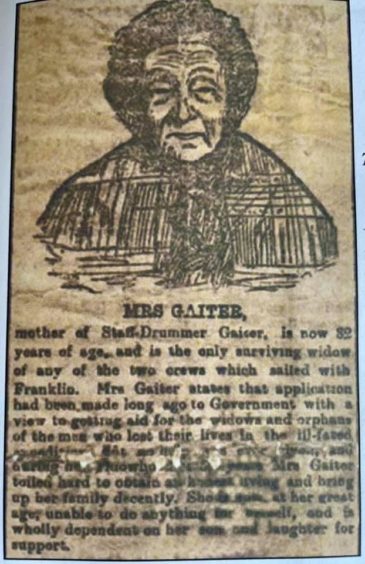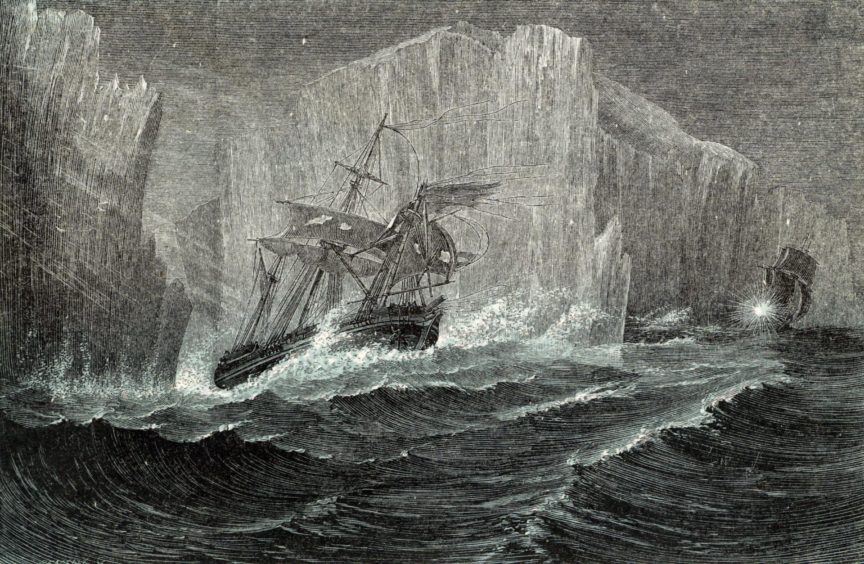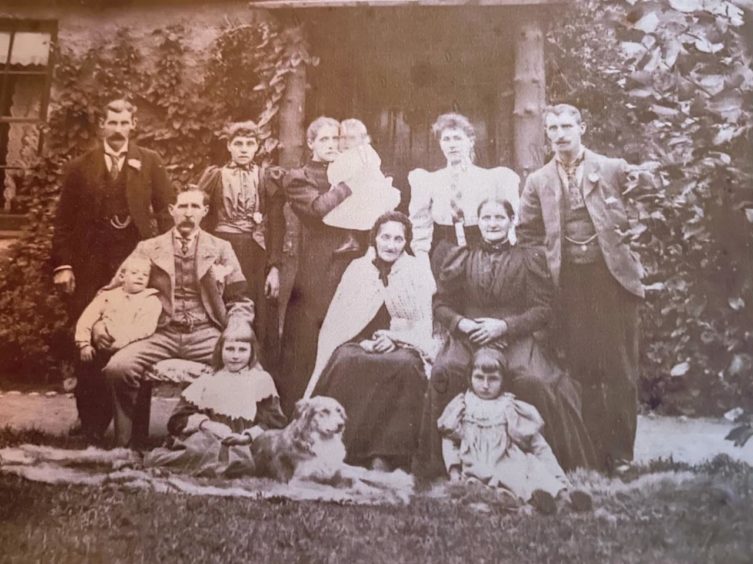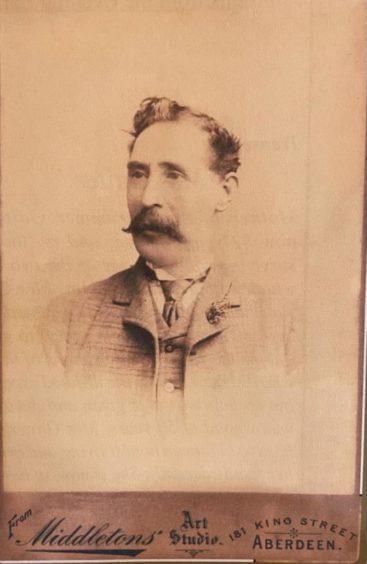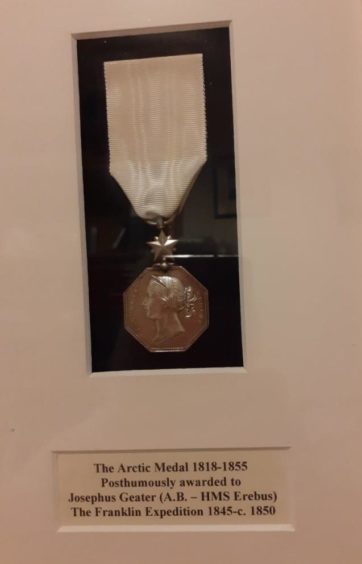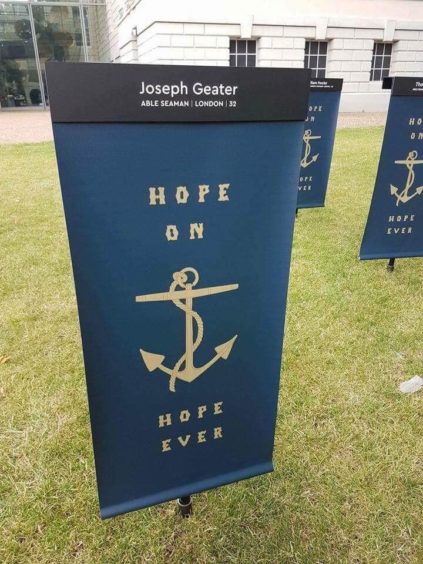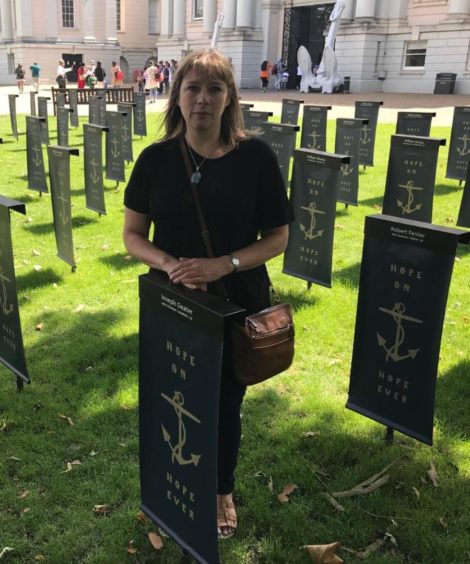It is a family journey which takes in the Battle of Trafalgar, a Stonehaven prison and Sir John Franklin’s doomed journey into the Arctic Circle.
And, even as the drama series The Terror has introduced a new audience to the dreadful hardship and horror which faced the sailors who embarked on a fatal trip towards the far north in 1845 and were imprisoned in pack ice until they died, new details are emerging of the Scottish links which bonded different people together.
Josephus Gaiter (or Geater) was among those who left his wife, Mary Ann and their four children behind in Aberdeen, when he joined the crew of the Erebus which accompanied the Terror on the ill-fated expedition.
Yet, long before his involvement with the Franklin mission, his own father had taken a long and winding road before settling down in the north-east.
A life on the ocean waves
Marilyn Hamilton, who lives in Newark in Nottinghamshire, contacted us with some background information about Josephus’ father who packed a lot into his life.
She said: “Richard Geater married Phillis Wilkinson on March 1 1799 in St Sepulchre’s in Shoreditch in [the east end of] London.
“He (Richard) served on the Dreadnought at the battle of Trafalgar [in October 1805], where he was armourer’s mate.
“When he left the Navy, he moved to Aberdeen, where he was a messenger at arms and then later became the governor of the prison at Stonehaven.”
The couple travelled to the Granite City just a few weeks after the birth of Josephus, who displayed the same enthusiasm and commitment to maritime life as his dad.
The youngster soon developed a taste for seafaring and exploration and, as a teenager, was apprenticed on board the Glentann – an Aberdeen-owned brig which made regular journeys to the United States and Canada.
He subsequently served as a second mate on the North Star, one of the trading vessels which travelled between such places as Inverness, Leith and London.
And it was while he was on shore leave in Aberdeen that Josephus met and fell in love with Mary Ann Duncan, the daughter of the ship’s captain.
The fatal decision which affected so many people
The couple were happy together and, although Mary Ann grew accustomed to her husband being at sea for large parts of the year, she accepted the situation.
Indeed, she had plenty of other things to occupy her mind, including raising young children such as her son Joseph, who later followed the Gaiter’s military tradition.
But, in 1845, Josephus made a decision which would inflict a grievous toll, both on himself and those he left behind.
The Aberdeen Journal said: “Ten years of happily married life had been spent by the couple [who had four children], when, attracted by the adventure which the expedition promised and the pecuniary inducements held out, Gaiter volunteered for service on board the Erebus and left his home for London on April 15.”
“That was the last I saw of him,” said the widow, with a sorrowful shake of her head.
A family’s anguish over the loss of a loved one
There was little reason for Mary Ann and her surviving children to be apprehensive in the weeks or months after Josephus joined the Franklin mission.
The Journal recounted how she watched the ships pass through Aberdeen Bay on their disastrous journey. The last that was heard of Josephus was the news contained in a letter written by himself from Greenland to his brother Frederick. In that communication, he stated that he was ‘quite well’ and ‘very comfortable’.
But she subsequently revealed nearly 50 years later: “The months dragged wearily, wearily by when we heard no word of the expedition, but still we hoped that news of the safety of the explorers would be brought to us at some stage in the future.”
Another descendant highlights the Gaiter legacy
Ruth Gibb has collated an impressive array of photographs of her great great grandfather, Joseph, the son of the man who perished on the Erebus.
And the collection includes an extended family gathering which features Mary Ann, taken in 1895, by which time she was in her 80s, surrounded by her loved ones, including Joseph, who is wearing a black armband.
It was at this stage of her life that the elderly widow told her story to the Aberdeen Journal and revealed how she had toiled to earn a living after her husband’s demise.
She was helped through the rest of her days by Joseph, who joined the Aberdeen Militia in the 1850s and later served with the Gordon Highlanders in the city.
Ruth has provided us with some images of her ancestor which demonstrate how he adapted to life on civvy street after finally leaving the regiment.
And she told us that he had worked for Bower and Florence, a firm of monumental sculptors who thrived at the Spittal Granite Works during the 19th century.
Ruth has assembled a rich gallery of memories of those who picked up the pieces after learning the sad fate of Josephus who died, along with the rest of his colleagues in the frozen Arctic wastes, beset by frostbite, extreme hunger and illness.
That explains why she has been proud of Marilyn Hamilton’s efforts – “It is a nice thing she is doing and an important part of Aberdeen history” – to secure an Arctic Medal to recognise what the men on the Erebus and Terror went through 170-plus years ago.
But even that task hasn’t been without its problems and challenges.
A medal for the fallen man
Marilyn has taken a keen interest in genealogy and researching her family tree for many years and, piece by piece, the story emerged from different sources about Josephus.
She said: “I first heard about his involvement via my father’s youngest sister, Catherine, shortly after I began to research my family history in 1999.
“He was the son of Richard Geater and Phillis Wilkinson, who were married in St Sepulchre’s in London. Richard had fought alongside Horatio Nelson at Trafalgar on the Dreadnought as armourer’s mate.
“Josephus married Mary Ann Duncan and there were four children, the youngest of whom, Susan or Susannah, was born in 1845, the year the expedition set sail.
“Whilst the late [historian and writer] William Battersby was researching his book, James Fitzjames, Mystery Man of the Franklin Expedition, he contacted me because he discovered my Geater line, which is extensive, and among them, my third great-uncle, Josephus, who left his wife and four young children in Aberdeen to join the expedition.
“William told me that he had asked polar historian and medals expert Glenn Marty Stein, about the Arctic Medal which should have gone to Mary Ann.
“Mr Stein confirmed that the medal had never been claimed by any member of the family and offered to help me obtain it. To this end, he put me in touch with a retired admiral, who enquired of the Admiralty as to whether they would issue one.
“They would not. He therefore suggested that he would look out for one from an auction house, which he did, and told me what I should expect to pay for it. I failed to secure the first one that came up, but was successful a few months later.
“When it arrived, it had the incorrect polar medal ribbon on it, so the admiral sent me a length of the correct, watered silk ribbon. My niece’s husband was in the military and gave me details of the best framer to use, and I am very pleased with the result.”
The prized artefact now hangs proudly on the wall as a reminder of the terrible events from Victorian times which have been highlighted by the new TV series.
The horror the men faced will never be forgotten
Ruth Gibb is pleased that the bravery and sacrifice of the men on board the Erebus and the Terror has been acknowledged in the new programme.
Yet she has no illusions about the sheer scale of the privations endured by the crew and how the paranormal aspects of The Terror have glossed over an inconvenient truth.
She said: There had long been a group of committed enthusiasts, but the discovery of the wreck of Erebus seven years ago reignited interest in the story and the mystery.
“It would be fascinating to find out exactly what happened to the men, and it appears there will be lots more interesting artefacts brought to the surface in the future.
“The recent attention because of the TV series is great. It is a very fantastical rendition of the story, but there has been a lot of attention paid to some of the small details on the ships which is good to see.
“Despite the supernatural elements, I have thoroughly enjoyed it. I am sure my relative and all the other men met very unpleasant ends, but the truth is they are more likely to have eaten each other than have been eaten by a monster spirit polar bear!”
The final episode of The Terror is on BBC2 tonight.
The series is on the BBC iPlayer.
